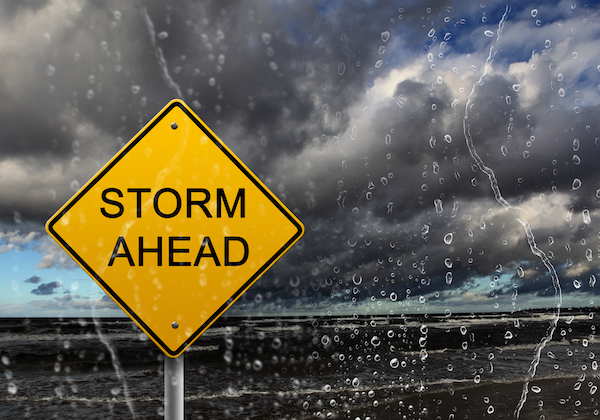Equipped for Bad Weather

Particular areas of the country are faced with natural disasters more than others. For example, coastal regions of are more likely to be struck by hurricanes than other areas of the country while others are prone to heat waves, floods, tornados or snow storms. Regardless of the threat, it’s best to make certain your aging loved one is prepared in the event of an emergency.
As we age, the reaction when emergencies threaten, slows down. Equipping your aging loved one with the necessary safety resources will ease the situation should a tornado or flooding occur in their neighborhood, reduce stress and alleviate some worries.
The best way to prepare for an emergency is to have an emergency kit ready, pay attention to news reports and have an evacuation plan in place. Older Americans face a host of issues that you may not have considered when a natural disaster strikes.
Here’s some steps to ensure that they are equipped for bad weather:
Before the season officially arrives, take stock of the area.
The safest area of the home in the event of a tornado is generally the basement. Survey the area. Look for the most structurally sound area and prepare an uncluttered spot for your loved one to wait out the storm. Don’t forget to make sure the pathway is uncluttered as well!
If the home has no basement, choose a center hallway, bathroom or closet on the lowest level. If the bathroom is small and filled with a scale, clothes hamper, or other removable items, temporarily move them to provide easy access and a safe haven.
Wherever you choose, make sure the area is tidy and free of clutter that will hinder them from securing a safe spot in an emergency. This is temporary and items can be moved back to their normal places once tornado season subsides. Safety first!
Make a Disaster kit.
Find a small easy to carry bag, backpack or duffel bag and fill it with emergency items! Place this kit in a spot your elderly parent or care recipient will remember. Periodically as you visit, remind them where the kit is, especially if bad weather is in the forecast.
Kit basics are:
- A portable, battery-powered radio or television and extra, fresh batteries
- Flashlight and extra batteries
- First aid kit and first aid manual
- Supply of prescription medications
- Credit card and/or cash
- Personal identification or copy of ID
- An extra set of car keys
- A bottle of water per person
- A spare sweater or jacket
- A candle and matches in a waterproof container
- Phone numbers for insurance companies, doctors, family members, close friends or relatives
- Prescription medicines and copies of prescriptions
- Hearing aid batteries, wheel chair batteries
- Spare eyeglasses
- Non-perishable food and juices
- Toiletries
LifeFone Medical Alert Systems do come with battery backup as well. Make sure that your loved one keeps their system charged at all times. Remind them to take their cell phone with them in case of any emergency. Regular phone lines go down in severe weather, however a cell phone is more likely to work.
In addition to having an emergency kit available, one of the best ways to care for an aging relative in the event of an emergency is to have a network of friends, family or neighbors available who can check in on them. Contingency plans should be in place and emergency contact telephone numbers should be put in the emergency kit because it is hard to remember phone numbers in a time of crisis.
Take these steps now and you’ll have peace of mind weeks from now when storm season shows up.
- How Seniors Can Feel Empowered in a Digital World with Accessible Technology
- February Is American Heart Month
- Thriving as a New Caregiver: Self-Care Secrets Revealed
- Bridging the Gap: Supporting Seniors Without Nearby Family
- Distance Caregiving Simplified: Modern Strategies for Compassionate Support
FREE BROCHURE Today!
